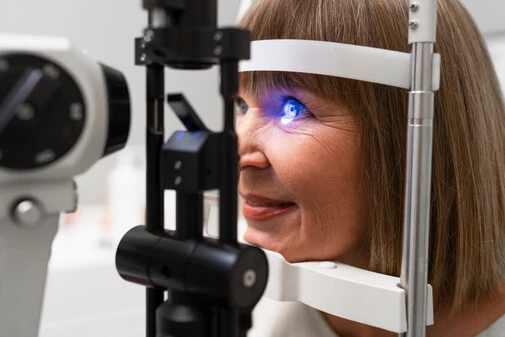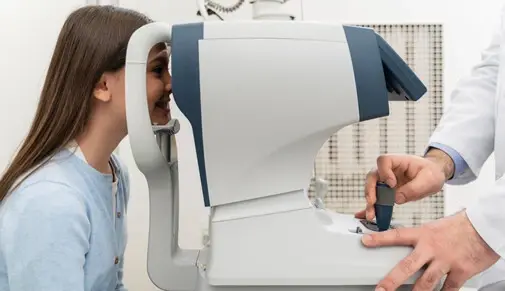Latest Innovations in Glaucoma Treatment

Glaucoma, a leading cause of irreversible blindness, often develops silently, stealing peripheral vision until significant damage is done. Thankfully, the landscape of glaucoma treatment is growing rapidly, offering new options for effectively managing this condition and preserving precious eyesight.
This post is dedicated to the new cutting-edge advances in the treatment of glaucoma, drumming up the benefits they deliver, and exploring the prospective for treating this sight-stealer of a disease.
Minimally Invasive Glaucoma Surgery (MIGS): A Gentler Approach
Traditional glaucoma surgeries, like trabeculectomy, involve creating a drainage channel in the eye to reduce intraocular pressure (IOP), the fluid pressure within the eye. While effective, these procedures can be invasive, leading to longer recovery times and potential complications. Minimally invasive glaucoma surgery (MIGS) offers a gentler approach with several advantages:
Reduced Tissue Disruption:
MIGS procedures use smaller incisions and delicate tools to create drainage
pathways or improve existing ones. This minimizes disruption to the delicate
structures within the eye, resulting in faster healing and a lower risk of
complications.
Faster Recovery:
TWith less tissue disruption,
patients undergoing MIGS generally experience shorter recovery times than
traditional surgeries. This allows them to resume their daily activities more
quickly with minimal discomfort.
Outpatient Procedures:
Many MIGS procedures are
performed on an outpatient basis, eliminating the need for an overnight hospital
stay. This can be a significant advantage for patients who prefer to recover in the
comfort of their own homes.
There are several types of MIGS procedures, each with its specific benefits. Some commonly used methods include:
Trabecular Micro-Bypass Stents:
These tiny, flexible
implants are placed within the drainage channels of the eye to create a permanent
pathway for fluid to flow out.
Endocyclophotocoagulation (ECP):
A laser probe is
used to deliver low-energy laser pulses to a specific area of the ciliary body,
which helps to reduce fluid production within the eye.
Sustained-Release Medications: Convenience Meets Compliance
Eye drops are the mainstay of glaucoma treatment, but frequent application can
be a burden for some patients. Missing doses can lead to uncontrolled IOP
fluctuations, jeopardizing vision. Here's where sustained-release drug delivery
systems come in:
Injectable Implants:
These tiny implants are inserted
into the eye and slowly release medication over an extended period, typically
several months. This eliminates the need for frequent eye drop administration,
improving patient compliance and potentially leading to more consistent IOP control.
Some emerging field also focuses on developing medications derived from biological materials like proteins or genes. Biologic drugs for glaucoma are being investigated, with the potential for longer-lasting effects and improved targeting of specific aspects of the disease process.

Laser Therapy Advancements: Refining the Beam for Better Results

Laser therapy has long been a valuable tool in the glaucoma treatment arsenal. While traditional lasers target the drainage channels to improve fluid outflow, newer advancements offer even more precise and targeted approaches:
Selective Laser Trabeculoplasty (SLT):
This minimally invasive laser treatment delivers low-energy pulses to specific
areas of the drainage channels, stimulating the body's natural healing processes to
improve outflow. The benefits of SLT include its minimal invasiveness, minimal side
effects, and the potential for repeat treatments as needed.
Laser Trabeculomeatal Surgery (LTMS):
A relatively new approach, LTMS uses a laser to create microscopic channels in the
drainage angle of the eye, providing a direct pathway for fluid to exit. This can be
particularly helpful for patients with more advanced glaucoma where existing drainage
channels are dysfunctional.
Early Diagnosis and Detection: The Power of Seeing Early
Early detection and intervention are crucial for preventing vision loss from glaucoma. The sooner treatment begins, the better the chance of preserving sight.
It is recommended to have your eyes checked promptly to prevent any further complications. You can book an appointment at Elite Eye Care, New York Eye Care Clinic.
Advancements in diagnostic tools are playing a key role in early detection:
Optical Coherence Tomography (OCT):
This non-invasive imaging technology provides a high-resolution, cross-sectional
view of the retina, the light-sensitive layer at the back of the eye. OCT can detect
subtle changes in the thickness of the retinal nerve fiber layer, which can be an early
sign of glaucomatous damage.
Improved Visual Field-Testing Techniques:
Traditional
visual field testing can be time-consuming and subjective. Newer methods, such as
frequency doubling perimetry and short-wavelength automated perimetry, are being
developed to improve sensitivity and accuracy in detecting early visual field changes
associated with glaucoma.

Schedule Your Appointment Today!
Don't let blurry vision or eye discomfort hold you back from experiencing life to the fullest. Contact Elite Eye Care Centre today and schedule a comprehensive eye exam.

